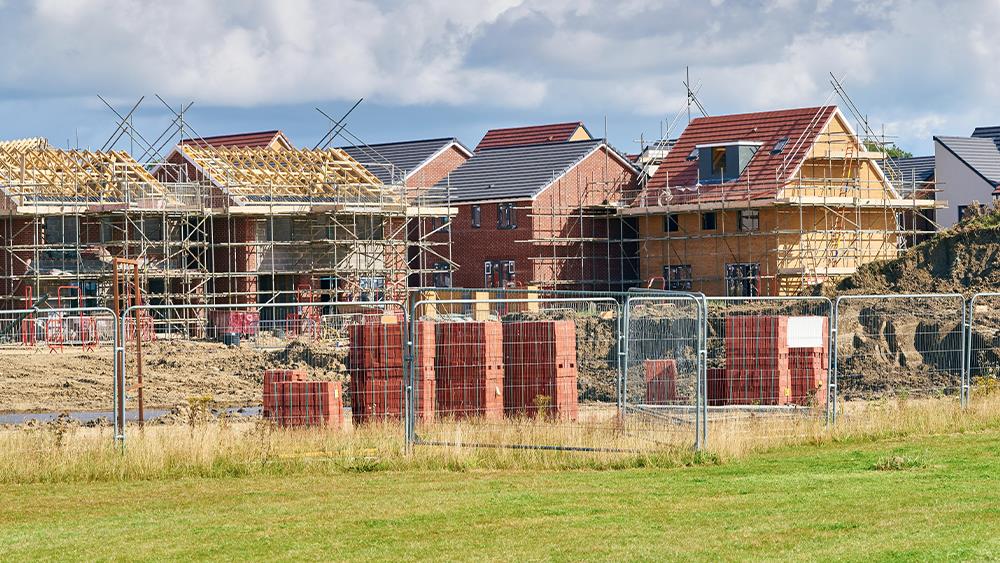

The latest S&P Global UK Construction PMI shows that house building remains the weakest-performing part of the construction sector, with total new work rising at the slowest pace since June 2024. However business optimism has rebound from the 13-month low seen in November.
UK construction companies indicated a loss of momentum at the end of 2024. Total business activity expanded at the slowest pace since last June, while new order growth moderated for the third month running.
The headline S&P Global UK Construction Purchasing Managers’ Index (PMI) – a seasonally adjusted index tracking changes in total industry activity – registered 53.3 in December, down from 55.2 in November and the lowest for six months.
That said, the index has posed above the crucial 50.0/no-change value since March 2024 and the latest reading still signalled a solid upturn in overall construction output.
Commercial activity was the fastest-growing area of the construction sector in December (index at 55.0), followed by civil engineering (52.9). However, both categories saw a slowdown in the rate of business activity expansion since November.
Residential work was again the only category to register an overall decline in output during December (47.6). House building activity has now decreased for three consecutive months and the latest reduction was the fastest since June 2024.
Survey respondents noted that subdued demand conditions, elevated borrowing costs and weak consumer confidence had all weighed on activity. Mirroring the trend for output volumes, total new work also expanded at the slowest rate since last June.
Anecdotal evidence suggested that improving tender opportunities in the commercial building sector had been offset by cutbacks to residential development projects and a lack of new business to replace completed infrastructure work.
Construction companies responded to weaker new order growth by reducing their input buying for the first time in eight months. In some instances, lower levels of purchasing activity were linked to tighter inventory management. Suppliers' delivery times were broadly unchanged in December. While some firms noted improving vendor performance due to lower demand, there were also reports that shipping delays had led to longer lead times for imported items.
December data highlighted a decline in sub-contractor usage for the fourth time in the past five months. Despite lower demand for their services, sub-contractor availability improved only marginally and at the slowest pace since March 2023. Meanwhile, latest data indicated the fastest rise in rates charged by sub-contractors for 20 months.
Adding to upward pressure on input costs, purchase prices increased at a robust pace that was only slightly softer than November's one-and-a-half-year high. Elevated cost inflation and rising salary payments were again cited as factors holding back staff hiring. The pace of job creation remained lower than the prepandemic average.
Looking ahead, around 48% of the survey panel predict a rise in output over the course of 2025, while only 15% forecast a decline. The degree of positive sentiment picked up sharply since November, but it was still much weaker than seen in the first half of 2024. While construction firms typically commented on optimism linked to long-term business expansion plans, many also cited worries about the general UK economic outlook and tighter budgets for capital spending.
Tim Moore, Economics Director at S&P Global Market Intelligence, commented: "December data highlighted a loss of momentum for construction output growth, with all three main categories of activity posting weaker performances than in the previous month. Commercial building maintained its position as the fastest-growing area of construction activity, followed by civil engineering. In contrast, residential work decreased for the third month running and at the fastest pace since June 2024.
"The slowdown in overall construction output growth reflected more subdued demand conditions in recent months, as illustrated by a further moderation in new order growth during December. Survey respondents commented on headwinds from elevated borrowing costs and the impact of fragile consumer confidence.
"Staff hiring picked up since November, but there were signs of tight supply conditions. Sub-contractor availability improved to the smallest extent since March 2023, while the rates they charged increased at the fastest pace for just over one-and-a-half years.
"Concerns about the demand outlook weighed on construction sector growth expectations for 2025. Although confidence recovered after a post-Budget slump during November, it was still much weaker than in the first half of 2024. Many firms reported worries about cutbacks to capital spending and gloomy projections for the UK economy."